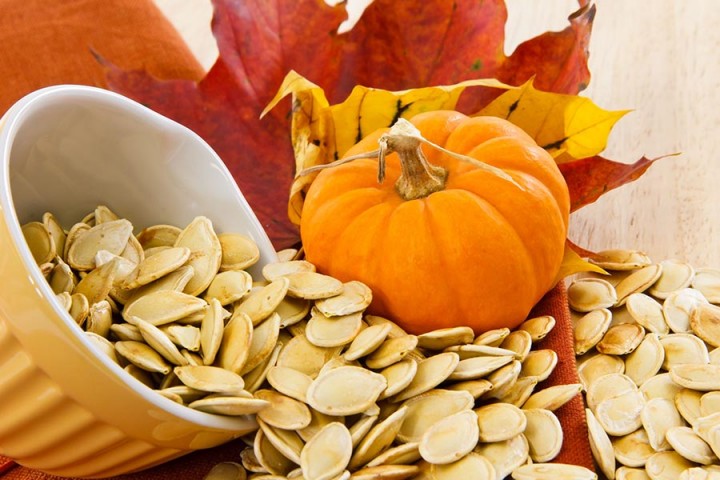Pumpkin is a food known for its nutritional value and versatility in cooking. However, some do not know that there are several species. Do you know the types of pumpkins?
Although not everyone knows it, there are several types of pumpkins. This food, so popular in the preparation of sweet or savory foods, is famous for its versatility and interesting nutritional properties.
As stated in an article in the “Chilean Nutrition Magazine, “both its peel and pulp and seeds concentrate fatty acids, antioxidants, amino acids, and other substances that benefit the body.
Table of Contents
7 Types of pumpkins
The pumpkin, also known as “pumpkin,” is a berry fruit from the plant with Cucurbita’s scientific name. There are different types of this species, so their forms of presentation are also variable.
It is not that one type is better than another, but various studies indicate that the regular intake of any of these varieties provides health benefits. In particular, it is credited with the following:
- Ability to strengthen the immune system.
- Supplement to keep glucose levels stable.
- Adjuvant to improve the lipid profile.
- Ability to regulate intestinal transit.
Although the evidence is lacking, it is believed that these benefits are obtained from its content of antioxidants, dietary fiber, vitamins A, B, C, and E, potassium, among others. So what types of squash are there?
Giant Squash (C Cucurbita Maxima)
The giant pumpkin is one of the most popular in the world. It is native to the temperate zones of South America and is cultivated, especially in Brazil. They come in various sizes, although the largest weigh between 40 and 50 kilos. Also, they are known as “sweet potato squash” or “guard squash.”
They are generally used in the preparation of savory dishes, such as soups or purees. They are famous because they are used in the making of popular Halloween lamps.
Turban or Turkish squash (Cucurbita Maxima)
The turban squash is also grouped within the giant pumpkins. They are known by the name of “pumpkin with Mexican hat,” “mushroom squash,” or “Aladdin” because it resembles these. This type weighs up to 1.5 kilos and, due to its peculiar shape, is used for decorative purposes.
It has a firm, crisp and mild-flavored pulp that is used to make creams and purees. However, compared to other varieties, it yields less because it has holes inside.
In the part of the «hat,» its shell is intense orange color and has a mottled or striped color; on the other hand, it has a white or light shade in the upper half. Super p Force and Fildena 100mg to best treatment for male impotence or erectile dysfunction
Patisson squash (Cucurbita Pepo)
Patisson squash is a summer variety that is also known as the “Peter Pan “ squash. It has a particular shape; it could be said that it is like a flat star or a flattened flying saucer, a characteristic that makes it possible to use it as an ornament. Its shell can be white, greenish, or purple, and dark.
It has a taste that resembles chestnut puree, which is why it is appreciated in gastronomy. Generally, they are eaten pickled, roasted, or as a garnish.
Anco squash (Cucurbita moschata)
Anco squash is the name given to the varieties known as anco, anquito, squash, or long-necked zucchini. This variety usually has orange or green skin with spots.
According to each one’s tastes, it can be consumed with its skin in recipes where it is filled or used as a pizza or lasagna base. Likewise, its pulp can be used to prepare puddings, tortillas, or jams.
Spaghetti Squash (Cucurbita Pepo Spaghetti)
Spaghetti squash is a creeping winter variety distinguished by its distinctive oval shape and yellow or orange peels. Inside, the flesh is light in color, almost white, with small black seeds or pipes.
When cooked in the oven, the pulp melts into strands that look like spaghetti, hence its name. Therefore, it is ideal for grilling with cheese, aromatic herbs, salt, pepper, and butter.
Peanut Squash (Cucurbita Butternut)
The skin of the peanut squash is tough, dull orange. Meanwhile, the pulp is moist and has an intense hue. Its flavor resembles that of peanuts, with a slight nutmeg taste. Because of this, it is ideal for making sweet creams or spreads, as well as roasts.
Sweet squash or cayote (C ucurbita Ficifolia)
It is oval, and its shell is thick, green in color with yellow or white mottling. It is a winter variety, with a sweet taste. Its meat is tender, juicy, and stringy. Inside it has a hollow area in which the seeds are found.
This type is used to make sweets or jams, so it is in demand in pastry making.
All types of squash are nutritious.
The types of squash differ in their colors, textures, and flavors. However, all are characterized by their low-calorie content and high nutrient content. Also, they are very versatile and can be added to many dishes. Do you dare to try types of pumpkins?






Comments are closed for this post.